HOW TO BECOME A REAL DESIGNER AND START SELLING (WITHOUT FASHION SCHOOL)
When it comes to how to become a fashion designer, one often imagines a creative figure creating iconic collections. However, the reality is much more complex. For those who, like me, have been working behind the scenes in the industry for years, it is clear that the designer is only the tip of the iceberg: he is the face of the brand, the one who signs the collection, but behind every success there is an entire creative and production system.
In this guide I will explain how to become a designer without schoolso even if you have not followed a traditional academic path or do not possess advanced tailoring skills. It is true that in the past many famous designers had studied fashion and were also skilled tailors, but today the fashion world has changed. New technologies and digital technology offer many opportunities to become a fashion designer and create a brand even without being able to sew (you can do it without being able to sew on a button!).
If you have studied fashion or are an experienced tailor, you definitely have an edge. Knowing fabrics, techniques and production processes is a valuable asset. However, if you do not have these skills, fear not: you can still become a fashion designercultivating your creativity and learning to lead a team of professionals.
This article has a special value for me: I wrote it for the first time in 2017 and it was one of my first pieces of content. Since then, many of the insights I shared have turned into a solid method for building collections, brands and, above all, for living the design profession with authenticity. You can find the fruit of this experience in my book, videos and the various materials I make available to you.
Today, with the 2025 revision, I have chosen to keep the original spirit of the article, but have enriched it with new reflections reflecting the profound changes in the fashion industry. Digital, new social sensitivities and the evolution of the global market have transformed the way the fashion industry is organised. become a fashion designercreating new challenges but also extraordinary opportunities.
Being a fashion designer today means much more than designing clothes: it is interpreting cultural, economic and technological changes, turning them into creations that tell a story. This new version is not just a technical update, but a comprehensive guide to help you understand what it really means become a designer in 2025. It is not just a matter of putting one's name on a label, but of being a conscious interpreter of one's time, capable of navigating the evolution of the sector with creativity, strategic vision and an eye to the future.
If your dream is become a fashion designer, you are in the right place: start your journey with this guide and discover how to turn your passion into a successful career.
Stylist: what he does and origin of the term
To understand how to become a fashion designerit is essential to start with a fundamental question: who is a designer and what does he do? If you have read my article ?The difference between a tailor and a designer?, you will already have some ideas, but here I want to start from the basics, from the very definition of the term.
According to the dictionary:
Stylist [sti-lì-sta] s.m. and f. (pl. m. -sti, f. -ste):
Who designs and creates the models for a collection of clothes, accessories or mass-produced industrial products: Italian fashion boasts famous designers; a car designed by a famous designer?
This definition suggests that the role of the designer is closely linked to the concrete design and creation of models and collections. However, the reality of the industry is much more articulated. It is not necessary to be able to sew or draw by hand to become a fashion designerlike not even having attended a stylist schoolThe heart of this profession is the creative visionthe ability to tell a unique and recognisable style.
The designer is the one who defines the identity of a collection, choosing themes, colours, materials and shapes. He is a creative director who guides the team (pattern makers, tailors, graphic designers, photographers) in the realisation of his vision. Today, thanks to digital, the designer can express his creativity in many ways: through 3D design software, digital moodboards and social platforms that become showcases for his style.
So, what a designer does? He creates, imagines and communicates. It is not just someone who physically makes a dress, but someone who tells a story through fashion. This is the key to become a fashion designer in 2025: mastering the language of style, interpreting trends and turning them into something unique and recognisable.
If your objective is become a designerdo not let yourself be held back by the idea that you only need technical skills. What counts is your vision, your creativity and your ability to transform an inspiration into a collection that leaves its mark.
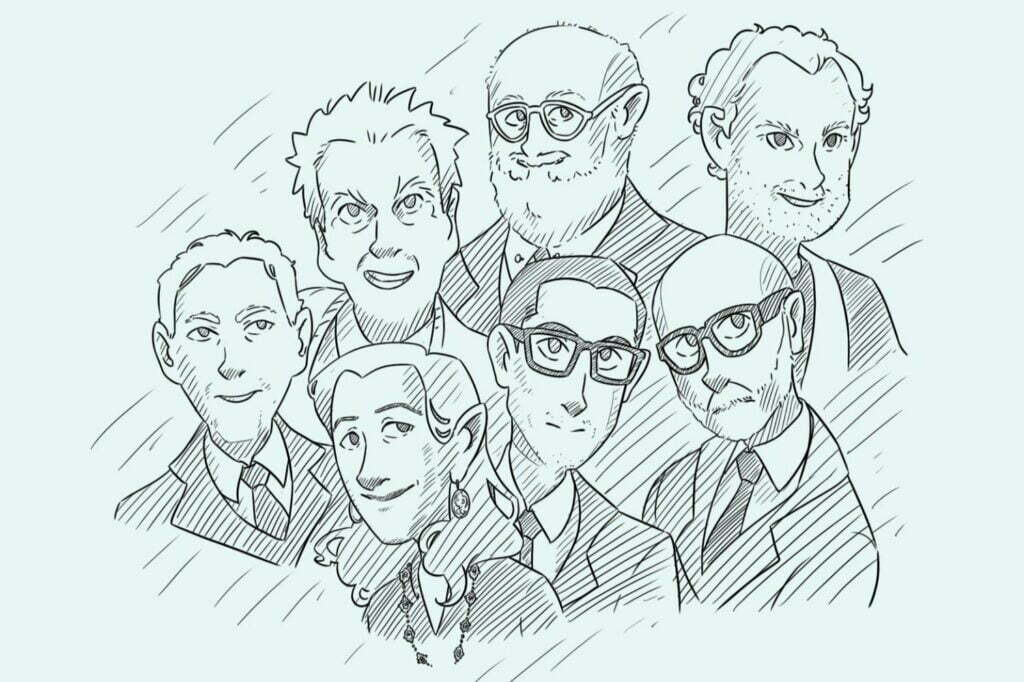
From my book: Portrait of some of the Italian designers who have most influenced our imagination. Courtesy of Martina Riva @Smileys
The designer as the face and spokesman of the brand
In the route on how to become a fashion designerIt is essential to understand the central role of the designer: he is not just a creator of clothes, but the public face and spokesperson of a style, an identity and, above all, a brand. As I told you, the stylist is just the tip of the iceberg, the guarantor that what we buy is not just a simple piece of clothing or a "chinoiserie", but the expression of a philosophy, a lifestyle and a status symbol.
Often the name of the designer coincides with the name of the brand, becoming its symbol. Through the maniacal attention to detail that characterises the brand, the designer communicates a consistent and recognisable message, collection after collection. It is this consistency, combined with a unique and authentic style, that makes the public recognise the brand and identify with it.
Being a successful designer does not only mean designing clothes, but building and communicating a vision. Expressive coherence is what makes a designer worthy of this title: it is the ability to repeat the same message, the same style and the same value universe in each creation. This repetition, collection after collection, creates in the minds of customers an immediate association between the brand and its unmistakable style.
However, become a designer is not easy: it is a long, demanding and often risky path. It takes time, perseverance and a well-defined strategy. The path can drain resources and energy, especially if one does not have a clear vision of the market. But it all starts with an idea: not a simple creative intuition, but a differentiating business ideadesigned to satisfy the desires of a niche of passionate people, ready to buy your creations because they recognise themselves in your values and style. Remember: A designer does not create clothes. He creates business models.?
In a brief summary, we can say that:
"The designer is the one who transforms a business idea into a recognisable style, using clothes and accessories to satisfy the needs of a niche of people. Through his creations, the public does not just buy a product, but a way of life, an identity and a vision of the world."
If this definition seems unclear to you, don't worry: I will analyse it in more detail in the course of this guide.
Being a designer and entrepreneur in 2025: new challenges and opportunities
In 2025, the way of being a designer has changed profoundly. The advent of artificial intelligence, digital evolution and growing social awareness have transformed not only the fashion market, but also the very role of this profession. Today, for become a fashion designerit is not enough to create original collections: it is essential be entrepreneurs capable of navigating a complex, fast-paced and highly competitive market.
In the previous review, I explained how crucial it is thinking like an entrepreneur and this concept is still valid and relevant, as I also explain in this in-depth article on how to do business in the fashion world. Creating an original collection is only the starting point (provided the initial idea is sound), but the real goal is positioning the brand in the marketsell it and, above all, generate profit. To achieve this, skills are needed that go far beyond creativity:
- Strategic planning: know when, how and with what resources to launch the collection.
- Cost management: avoid waste and maximise return on investment.
- Consistent message: create a recognisable style and communicate brand values with authenticity.
- Effective marketing: make the collection known to the right audience through the right channels.
- Knowledge of the target audience: understand who your ideal customers are and why they should choose your brand over others.
Today, however, these core competencies are intertwined with the new challenges of the global market. Future designers have to face a reality transformed by technology, artificial intelligence and new environmental and social sensitivities.
Digital: the new fashion stage
Digital platforms, from emerging social to the virtual storefronts of the metaverse, have become the main space where brands are born and grow. In 2025, success will increasingly be measured by the ability to build community around their brandcreating experiences that go beyond the physical product. If you are wondering how becoming a designer without school then you definitely have to consider collaborations with creators and the use of immersive content, such as interactive videos and live shopping. These have become some of the essential tools to connect directly with the audience.
Sustainability and transparency: non-negotiable values
Also the sustainability and ethics are now indispensable pillars for those who wish to work as a stylist: customers want to know who you are, what you stand for and how you produce. This means that the designer-entrepreneur must not only communicate clear values, but concretely integrate them into the business, from the choice of materials to the transparency of the production chain.
Artificial intelligence: the invisible ally of success
Another crucial aspect in 2025 is the use of?artificial intelligence to improve every aspect of the business: from analysing trends and customer preferences to personalising shopping experiences. Who wants to working in fashion without experience but knows how to integrate technology and creativity in the fashion world has a huge competitive advantage. With artificial intelligence, for example, it is possible to analyse customer behaviour on social networking and online sales in real time, predict emerging trends through data analysis, and optimise production by quickly adapting inventory and distribution to meet market demand in an efficient and timely manner.
Customer loyalty: the true asset of the brand
Finally, customer loyalty continues to be crucial, but in 2025 it is built through authentic experiences, customised offers and exclusive services, such as the made-to-order or access to limited collections reserved for the most loyal members. Fashion is a recursive businessbased on the customer loyaltyThis is one of the fundamental aspects in the fashion world that is often not taught, not even in academies. The real secret to become a fashion designer is not to sell a garment only once, but creating a lasting relationship with those who choose your creations. Your objective must be turning an occasional buyer into a loyal customerready to choose your brand season after season.
Marketing strategies to retain customers in the fashion world
If you want become a fashion designer and build a successful brand, you need to be able to maintain a relationship with those who have already chosen your creations. Remember that one of its fundamental principles is that it is much easier to sell to a customer who has already bought from you than to win a new one.
Here are some effective strategies to retain customers:
- Special offers and dedicated sales: It rewards the most loyal customers with reserved promotions and exclusive benefits.
- Preview launches: Reserve early access to new collections for your best customers, making them feel part of a privileged circle.
- Limited editions: Create exclusive collections and drop limited time to generate desire, urgency and a sense of belonging.
- Loyalty programmes: Offer benefits, gifts or experiences to those who continue to choose your brand season after season.
These initiatives not only do they incentivise repurchasebut they create an emotional bond, making the customer feel an integral part of your brand.
In addition, become a fashion designer success means understanding that marketing and psychology are two fundamental allies. They are the ones who build your brand perception and tell the story behind each of your creations. It is not just about clothes, but about emotions, desires and identification. Those who choose your brand must feel part of your world and recognise themselves in your values.
The stylist interprets the customer's needs: psychological value in fashion
If you really want to understand how to become a fashion designeryou must go beyond simply creating beautiful clothes: it is essential to understand why people buy clothes and what they seek through fashion. The success of a designer depends not only on design, but on the ability to create an emotional bond between the brand and the wearerresponding to the deepest needs of the public, even in an era dominated by speed and disposable fashion.
Today we live in an era characterised by fast fashionwhere everything is fast, ephemeral and easily accessible. However, even in this hectic scenario, people are looking for more than just a garment: want to recognise themselves in what they wear, assert their identity and stand out. The new fashion needs are not only about possession, but about the sense of belonging, experience and meaning.
The question is simple: Why do we buy clothes?
We often hear common answers such as Why do I need them? o ?Because I have nothing to wear?. In reality, the reason is much deeper and psychological:
Do we buy clothes because they make us feel good?
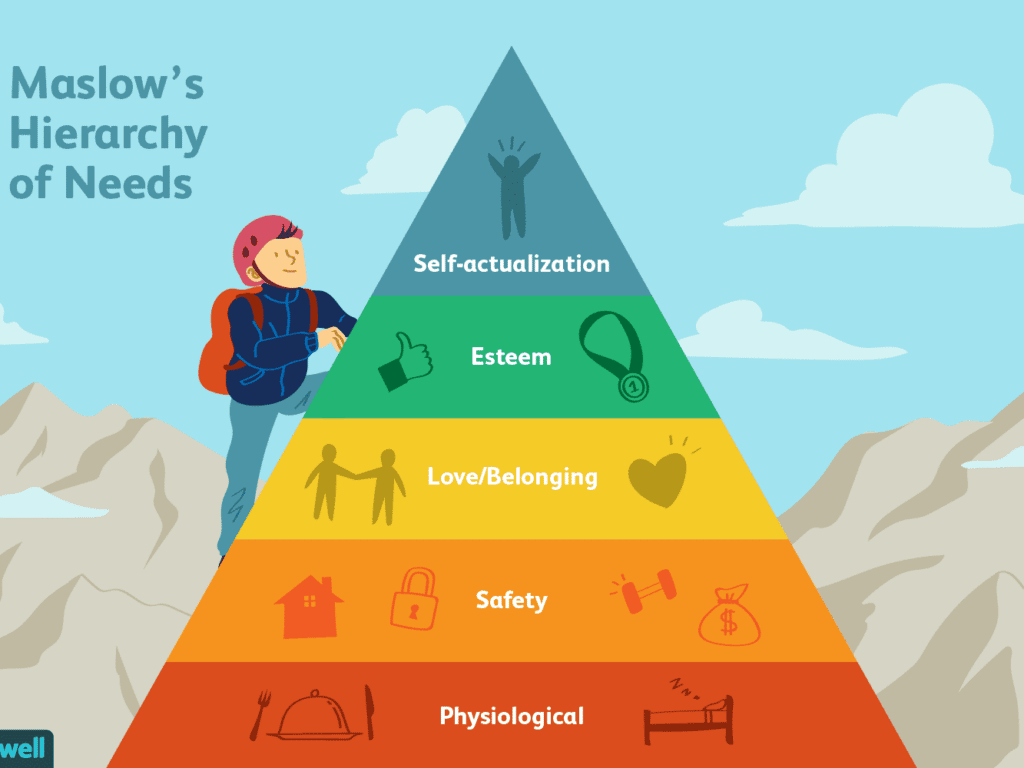
To better understand this mechanism, we can look at the Maslow's pyramid of needsthe famous theory of the American psychologist Abraham Maslow. This pyramid represents human needs in a hierarchical order, starting with the basic ones, such as food and security, up to the more complex ones, such as self-fulfilment.
Although clothing satisfies essential needs such as protection from the cold or weather, the fashion belongs to the sphere of psychological and social needs (the middle level of the pyramid, represented in yellow). We do not buy just out of necessity, but to express who we are: our style reflects our identity, our values and how we want to be perceived by others.
According to Freud, every purchase is guided by the subconsciousinfluenced by our ideal image and the values we wish to express. There is no randomness in shopping: we buy what makes us feel represented.
Why am I telling you this? Because if you want to be a designer, you have to be clear in your mind who you are addressing, who the people are who will wear your clothes, why they will wear them, how they will feel. It is not enough to have an innovative idea or to create quality clothes if these do not communicate anything and do not resonate with the person looking at or wearing them. Every fashion collection must satisfy the emotional and symbolic need of a specific nichethe one who will feel represented by your style and will want to continue to choose you, season after season. This is the true sensitivity you need to become a designer and create their own brand: understand the audience and convey a unique message through your creations. Everything else is secondary, even knowing fashion or how to sew.
You can always rely on experienced professionals, such as pattern makers and tailors, for the technical realisation of your garments. But there is something no one can do for you: define the idea that makes you unique, the message that communicates who you are and why the public should choose you.
In technical jargon it is called "positioning"which is what makes you stand out in the marketplace and in people's minds. It is what makes your brand recognisable and different from all the others. And this vision, this strength, must come from you.
If you want to delve deeper into the concept of positioning and understand how to build a strong identity for your brand, I talk more about this in an article dedicated to the importance of the brand design in the fashion business.
The designer between inventor and visionary
Often the designer, who in most cases gives the brand its name, is much more than just a designer: he is the creator, the face and soul of the project. He is the one who brings forward a unique vision, turning an idea into a recognisable style.
There is one thing no one tells you: people like to connect with other peoplenot with anonymous brands behind which they do not know who is hiding. When the brand has a face, a history and a clear idea, it is easier to create trust and identification. That is why, if the idea is yours and you know how to carry it forward with consistency and passion, you will be recognised as the founder, the creatorthe beating heart of your project. This is how you build success, piece after piece, collection after collection.
You don't have to be a master craftsman to be a fashion designer: you must be a visionarycapable of leading the project and creating a brand that speaks to the public's heart.
Think about Steve JobsHe was not an engineer, and when he came up with the idea for the iPad in the 1990s, he wouldn't have known where to start to assemble it. His genius lay not in his technical skills, but in the revolutionary vision and in the ability to lead a team towards the realisation of that idea.
Another even more recent example is Elon Musk, founder of Tesla, SpaceX e X (formerly Twitter). Musk is not an automotive engineer or an astronaut, but a visionary capable of turning ambitious ideas into reality. He has imagined luxury electric cars when the market considered them impossible to sell and has brought space exploration to a commercial level. His value is not in the technical achievement, but in the ability to dream the future and lead a team towards its realisation.
The same goes for youyou want to enter the fashion world. For become a designer you don't need to know how to sew or design technical models: what matters is the idea, the message and the vision you want to pursue. The rest can be entrusted to professionals capable of turning your idea into reality. The Be A Designer team is here to do just that: if you want to become a successful designer and launch your brand you can book a personalised consultation!
Becoming a designer without school in 2025: the real challenge lies in your vision
As we have seen, becoming a designer without school today is possible, but the road is long and requires vision, strategy and determination. It is not enough to create clothes: real success is built before you even enter the market, in the minds of your potential customers. Today, digital, artificial intelligence and social media have made it more accessible to build a brand without a traditional academic path. However, what really matters is to have a clear idea, a strong identity and the ability to stand out in an increasingly fast-paced and competitive market. Because to succeed you have to sweat and fight, but most of this war is fought before you get on the battlefield (the market) and above all in the minds of our potential customers even before we make a single dress.
In 2025 there is an even greater feeling that it is not necessary to have attended a designer school to succeed: what makes the difference is your ability to read the market, tell your story and build an authentic connection with your audience. You can use digital to make yourself known and artificial intelligence to interpret trends, but it is you who will give your brand that unique vision that will make your customers fall in love with you.
Did you like this article? Leave me a comment below and share it on your social networks with those who might appreciate it! I'm Corrado, and that's it. See you in the next article, where we will continue together on the journey to become a designer without school, but with passion, strategy and vision!
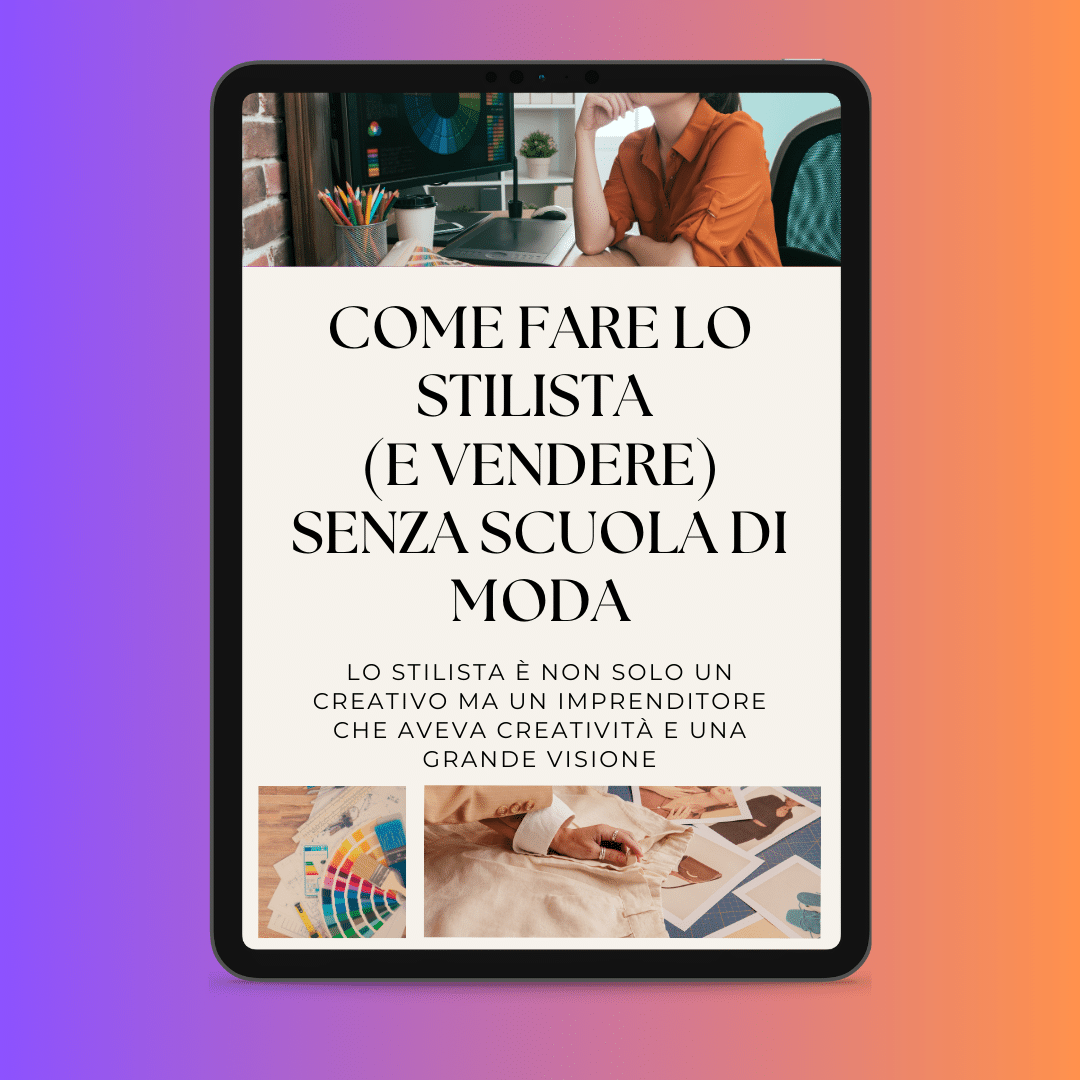

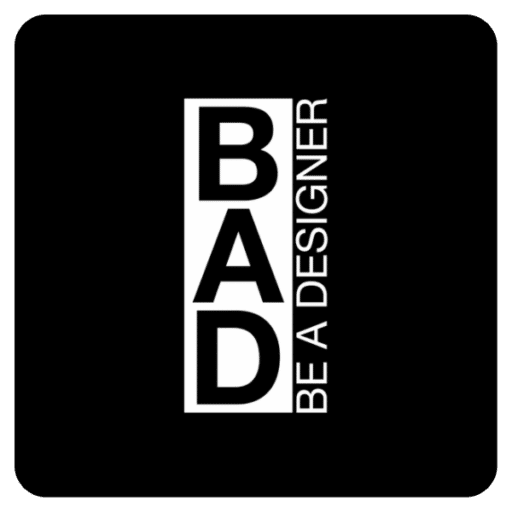











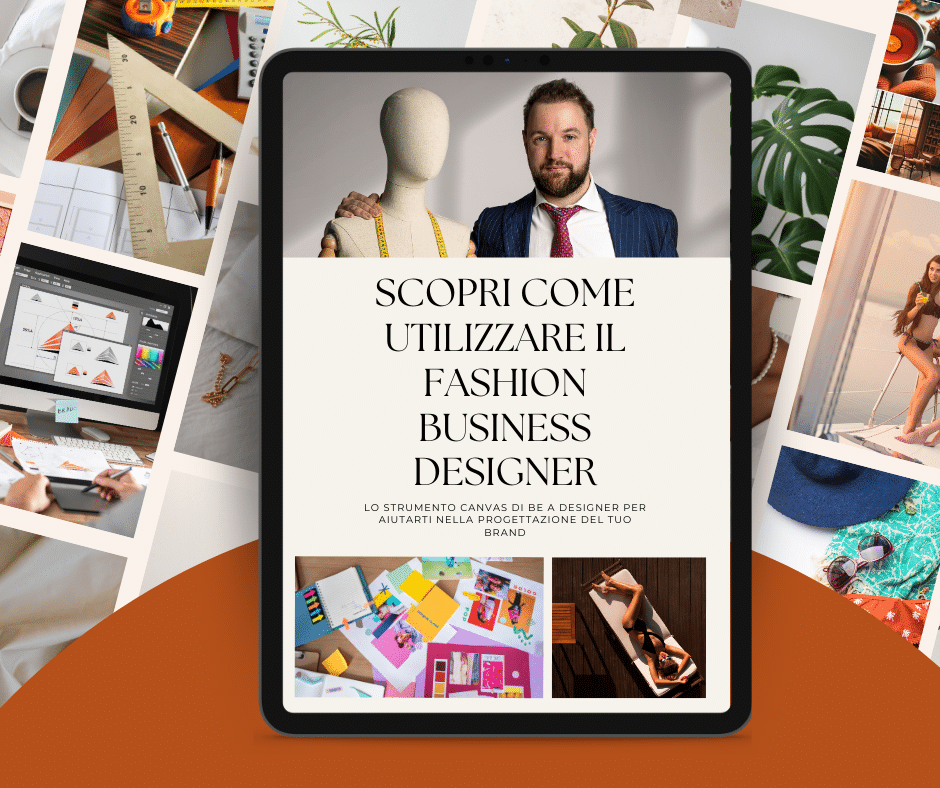
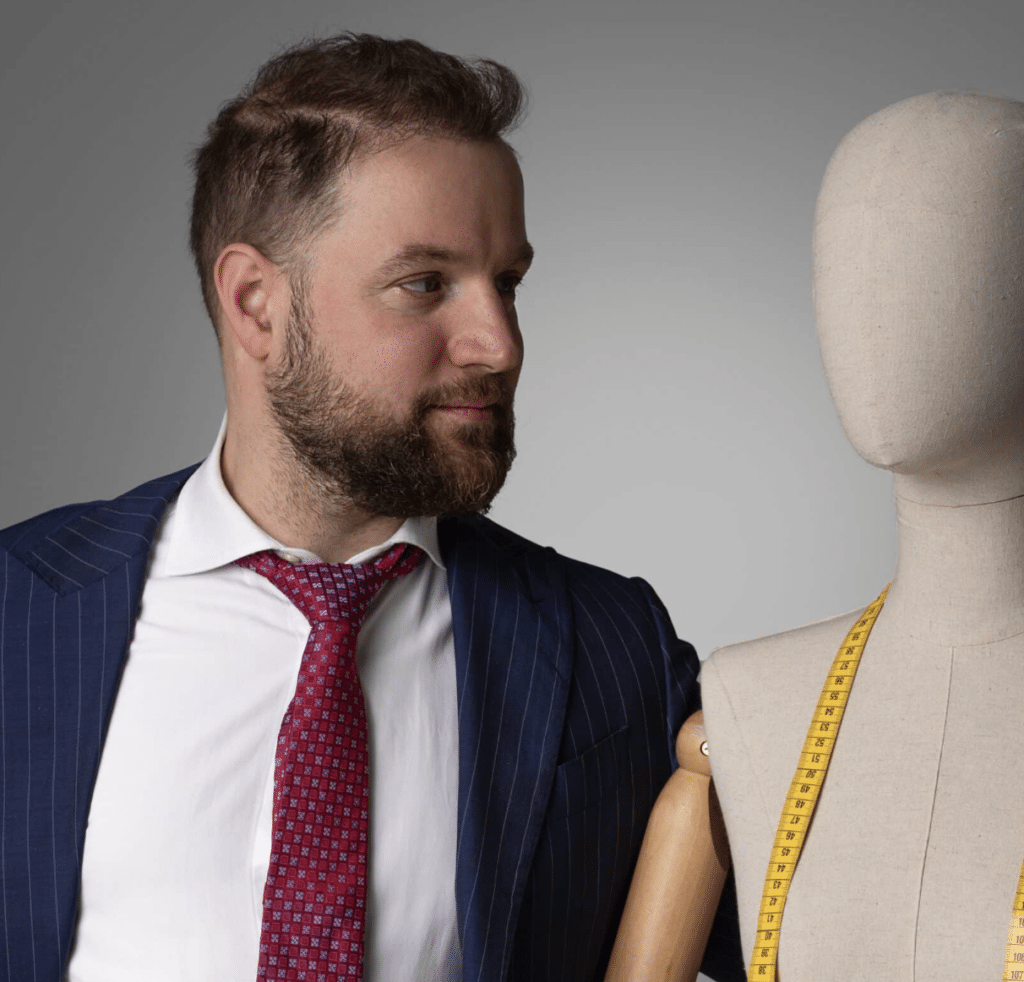
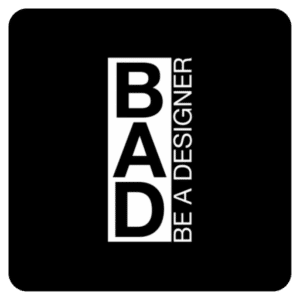
Merci énormément à vous vous faites me croire que rien n'est perdu voulant faire des études en couture ,mes parents trouvaient que ce n'était pas à l' hauteur de leurs attentes j'ai dû convergé vers autre chose.Mais aujourd'hui je suis toujours tourmenté par la non réalisation de
mon rêve. Votre article est vraiment... Les mots me manquent tout ce que je puisse dire j'avais besoin de ça pour y croire encore?
Beautiful article, indeed! I was inspired by what you wrote. I am an aspiring designer and hope to make my own brand one day too.